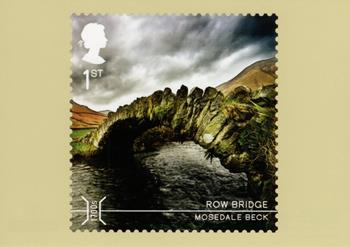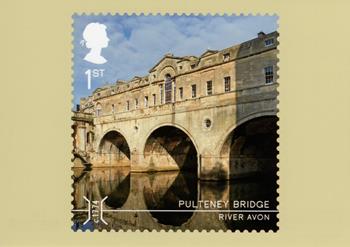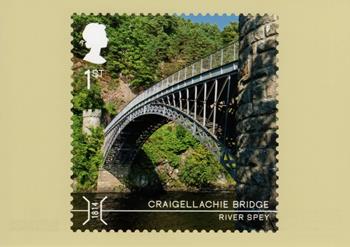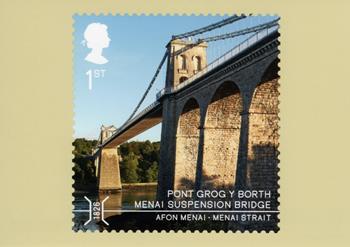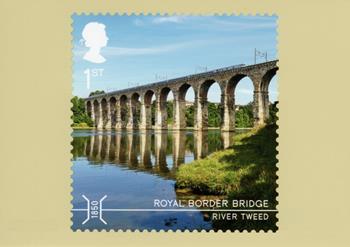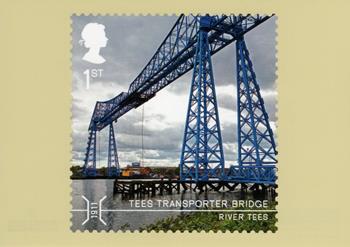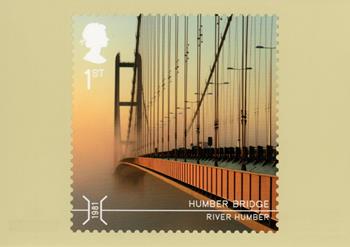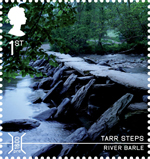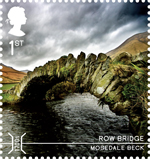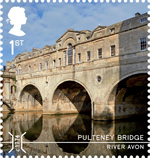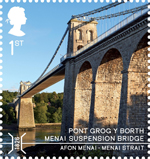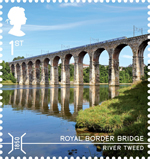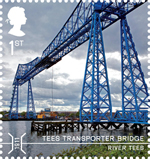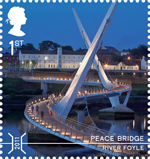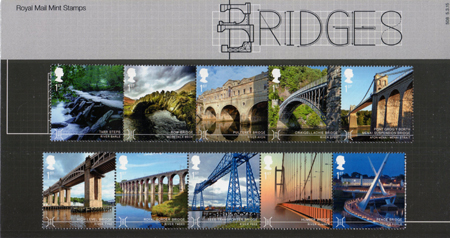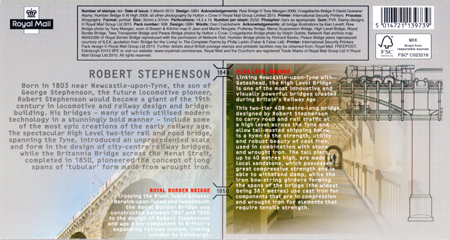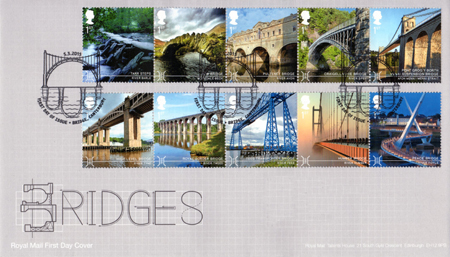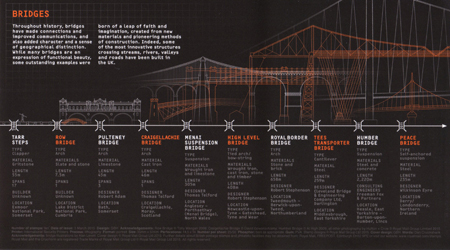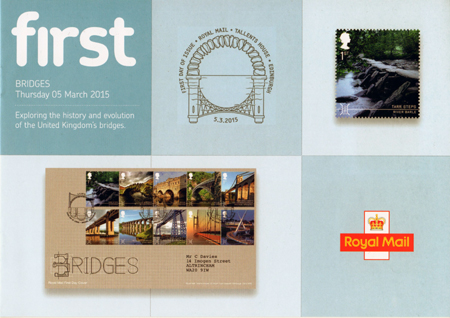Bridges
2015 (March 5 2015)Commemorative
Designed by GBH
Size 35mm (h) x 37mm (v)
Printed by International Security Printers
Print Process Lithography
Perforations 14.5 x 14
Gum PVA
Stamps
Tarr Steps
1stImage preview by Royal Mail
The origins of Tarr Steps, which crosses the River Barle in Exmoor National Park, are not definitively known. It has long been suggested that the structure could be up to 3,000 years old, but recent research reveals it is most likely to date from the 15th or 16th century.
Pulteney Bridge
1stImage preview by Royal Mail
Designed by the esteemed Scottish architect Robert Adam, Pulteney Bridge in Bath is the UK’s finest example of an ‘inhabited’ bridge. Completed by 1774, it contains shops, originally with accommodation above, and was built to link the ancient centre of Bath with the proposed new Bathwick estate on the opposite bank of the River Avon.
Royal Border Bridge
1stImage preview by Royal Mail
Crossing the River Tweed between Berwick-upon-Tweed and Tweedmouth, the Royal Border Bridge was constructed between 1847 and 1850 to the design of Robert Stephenson and was a key component in Britain’s expanding railway system, linking London to Edinburgh.
Tees Transporter Bridge
1stImage preview by Royal Mail
Completed in 1911, the Tees Transporter Bridge in Middlesbrough is a most novel and visually arresting piece of engineering. Vast in scale and utilitarian in appearance, its stripped-back, lattice-steel structure incorporates a pair of cantilevered trusses that span 259 metres – with a clearance above water of almost 49 metres – that are used to carry a ‘gondola’ across the river.
PHQ Cards
RM Code AQ218

